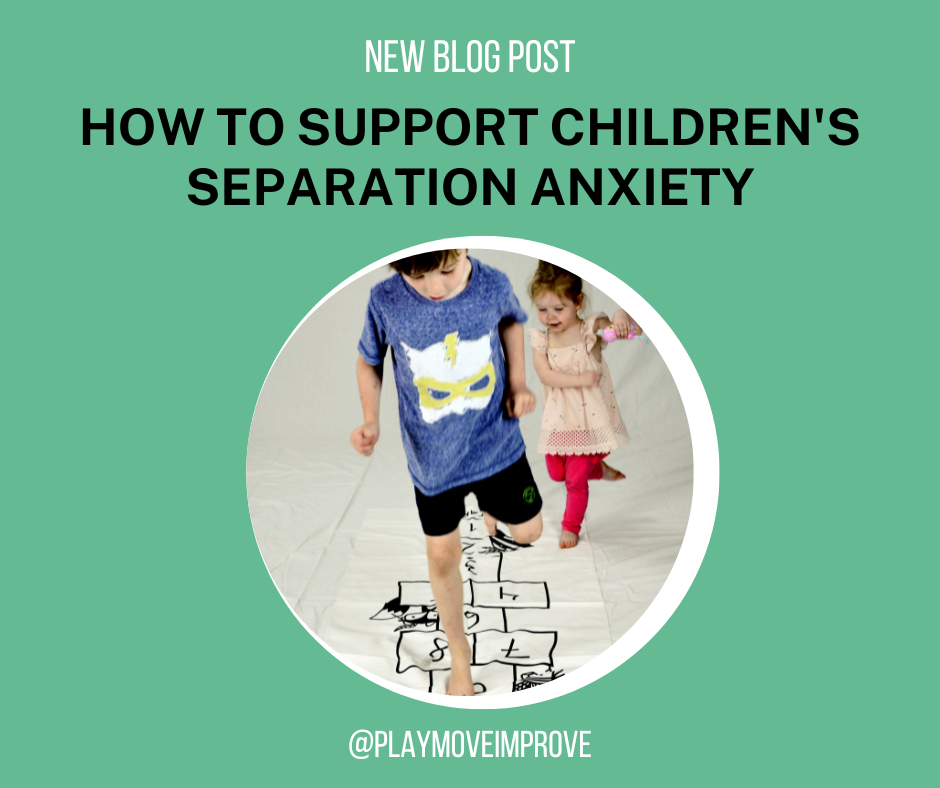
How to support children's separation anxiety
Share
Can I let you in on a secret?
Separation anxiety isn't fixed by
- expecting a child to 'deal with it' or ‘grow out of it’
- distracting the child as their family member quickly escapes the room
- expecting educators and teachers to tolerate it or ignore it
Separation anxiety is reduced for children, family members, educators and teachers when we understand and talk about the research that shows us anxiety is a level of arousal/energy that we all experience. Anxiety helps to motivate us to get out of bed in the morning so we’re not late to work. Anxiety motivates us to complete a task, or be there for a loved one. However, anxiety can also try to keep us stuck in our comfort zone, because the unknown feels uncomfortable.
Anxiety doesn’t always need to be something that we want to quickly fix, ignore, or push to the side. Anxiety has it's pros and cons for supporting our physical, emotional and social health and wellbeing.
Our goal is to set up routines, activities, and ways to connect with children and family members that reduces the stress for all involved, because no one enjoys dropping a screaming child off to kindergarten or school. For example, getting the brain and body co-regulated on the way to kindergarten by sensory strategies in the car (listening to favourite music, slow acoustic music, telling jokes), sensori-motor activities in the hallway (walking along foot prints, looking for hidden animals along the hallways, counting the number of hidden beetles along the path) so that by the time the child is at the door, the child's arousal and anxiety level is lower.
Once the child arrives to kindergarten, talk to children about 3 activities you have planned for today, give the child a quick and familiar job straight away as they arrive (feed the fish, wipe down the tables, water the garden, fill up the water jugs), tell the child that you’re excited to hear about their day when you come back.
Children’s little bodies experience a lot of different emotions. From anxiety to apprehension, to excitement, to nervousness. If you think about the times when you’ve felt anxious and excited, your body often experiences the same sensations (racing heart, sweaty palms, fidgety legs). It’s how we identify what we’re feeling with the people who we trust, that helps us to navigate the unknown and the discomfort.
If you have a child that is struggling with separation in the morning or witnessing a child struggling, use these tips:
❤️ Tap into the right hemisphere of their brain by reassuring them that “you’re ok”, “you’re safe”, “I can see that you’re feeling nervous, worried. It’s ok to feel those feelings”
💜 Spend time at any new place you are taking them - this builds safety and familiarity to the environment. However, try not to hover around for too long. Because the longer you hover in the morning, the longer you keep their apprehension and nervousness heightened. For over 10 years I have seen how quickly little ones settle as soon as their family members have gone to work or home. I can assure you that educators and teachers will call you in the child continues to feel upset for too long
💙 Let the child take their favourite toy or stuffed animal to the environment. Or place a favourite object in their pocket that you have kissed or hugged with your kind thoughts before dropping them off
💚 Communicate with the child about emotions being ok, we all feel nervous sometimes “when I feel nervous I like to colour in, water the garden, feed the fish, give my teddy a hug, take 10 deep breaths” - communication is key to any uncertainty a child is facing, so don’t be afraid to talk about what their body looks like, or share thoughts with each other about what anxiety and nervousness feels like
Is it going to get better overnight?
No.
Are you going to try a few things until the stress reduces?
Yes.
It's a slow jog, not a sprint, but in the end, you are going to have a child that is happy and confident no matter their environment.
PS: If you want access to a treasure trove of resources, webinars, and activities that will teach you how to help kids grow and develop in the best way possible, check out this emotional regulation webinar